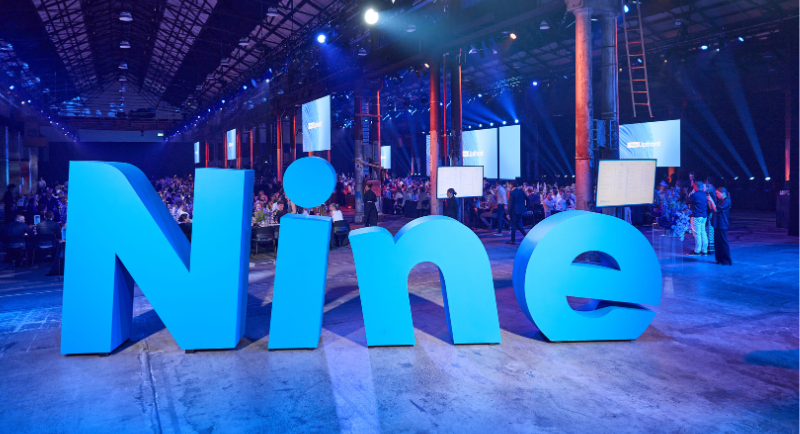Staging the Nine Upfront was going to be a challenge this year. The promotion of how the television, audio and publishing business would better service advertisers and viewers has to be held toward the end of the year.
In previous years, Nine was often the first broadcaster out of the blocks in September. This year, there were reasons that couldn’t happen. Some out of its control, some self-inflicted.
September wasn’t ideal this year because of the Paris Olympics and Paralympics. The latter didn’t wrap until September 8. The self-inflicted dramas were the departure of chief executive Mike Sneesby at the end of September. Then there was the culture review that Sneesby and the board ordered which was released just days before the Upfront event.
It wasn’t just the date that was very different about the Nine event this year. The Upfront was a sit-down lunch for 1200. There was no talent onstage, although many were scattered amongst the audience. The stars of the show were the commercial heads…and the acting chief executive.
The content – well it was mentioned here and there. But it was chiefly highlighted in a 10-minute reel at the end of the two-and-a-half-hour presentation. A timespan that included lengthy breaks to eat and network.

Nine’s new content for 2025
Matt Stanton’s message
The interim CEO was never going to please everybody with his opening four-minute introduction. There was much conjecture about how he might address the culture review and its aftermath. He kept it brief and mixed it between messages about “maximising the value of our unique suite media assets”. Then later a request to “reflect on how you plan to invest with us for your brands and your clients”.
Stanton’s comments surrounding the turmoil at Nine were brief:
“It’s also been a significant year of change and disruption for Nine. As an organisation, we’ve had to face hard truths and confront systemic cultural issues, which has been incredibly challenging for our people. At all levels of the business, we are deeply committed to embedding meaningful and lasting change at Nine and believe that this difficult yet necessary process will allow more of our people to perform at their best and pave the way for positive industry-leading change. As our trusted partners, I’d like to really thank you all for your ongoing support, which there has been a lot, which I know our people really, really appreciate.”
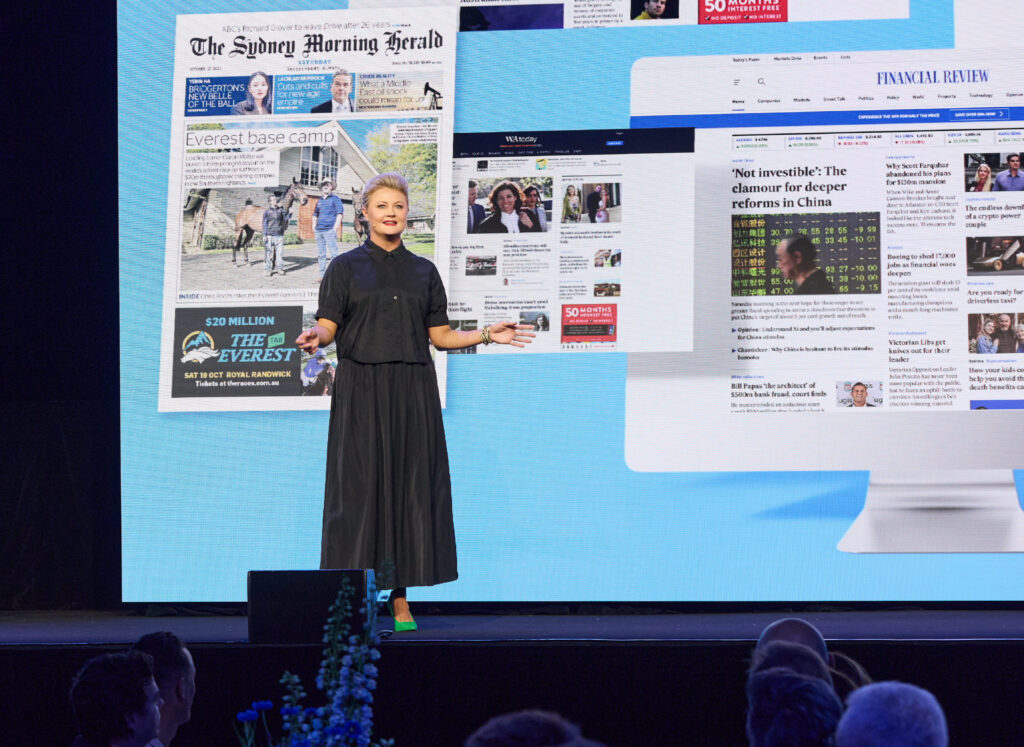
Liana Dubois
The real Nine Upfront stars
As broadcast business models change, it’s no surprise perhaps that the revenue generators have become the most important, and in this case, the only stars on the Upfront show.
Taking the stage first after Stanton, and a break, was Nine chief marketing officer, Liana Dubois. She spoke to “better business results”. She also reminded advertisers and agencies that the company now had 22m registered 9Now viewers and its combined assets reached 95% of the population.
In a 15-minute slot, Dubois also shared the stage with Nine chief data officer, Suzie Cardwell.
Their messages included audience updates for growth across the publishing portfolio, radio and video consumption.
Dubois also wanted to correct what she called a misconception about TV audiences. “Nine’s TV audiences are not in decline. They are resilient and they are growing. Nine’s Total TV audience is up 9% year-on-year. Broadcast viewing is up 6%.
“9Now viewing is driving growth a whopping 40%.”
As to the reasons for the growth – Dubois had a number of answers. The content. The house of brands. And the consumer experience.
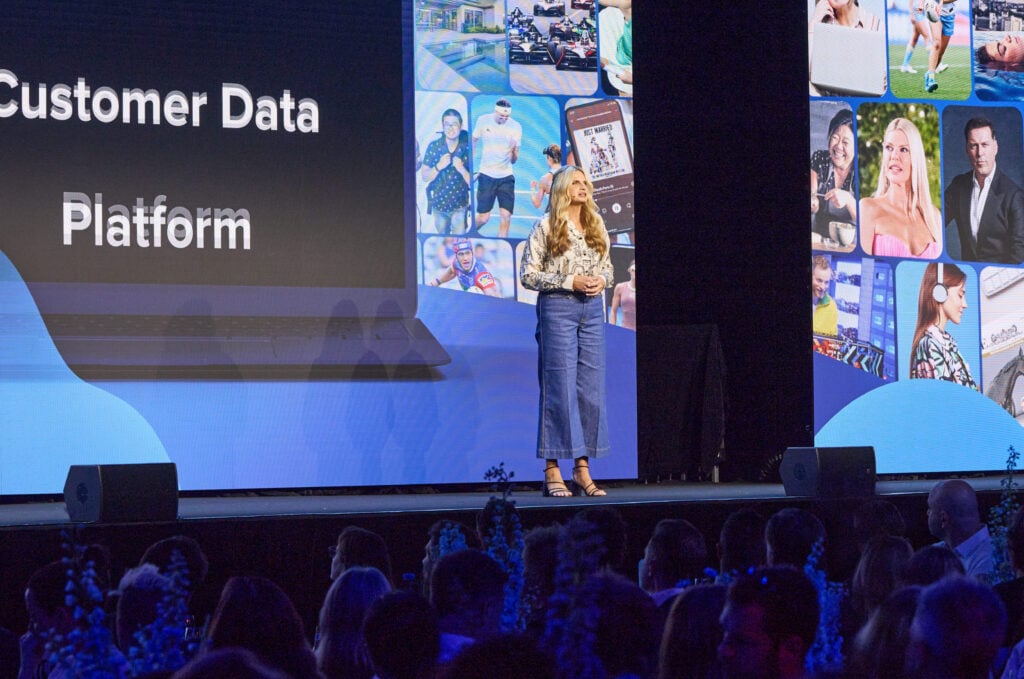
Suzie Cardwell
When Cardwell arrived she spoke to the scale and impact Nine’s first-party data can have. She spoke about rebuilding Nine’s data platform and choosing Adobe as its customer data platform partner.
“The customer data platform is a game-changer. It brings together more than 40 data sources from across Nine.”
She revealed a new partnership with Dataco, providing category-spend data from ANZ Bank.
Cardwell was a mythbuster too. “We are busting the myth that our audiences are older. They’re not. Millennials aged 25 to 39 are our largest registered audience at 34% of the total, followed closely by Gen X at 22%.”
She finished with: “No matter your brand or category, we have the data, the insights, and the targeted capabilities to deliver you better business results.”

Nine’s digital Upfront newspaper
Nick Young and Stepho…read all about it
After close to an hour break for the lunch service, the Nine Upfront main course was delivered by commercial director for digital Nick Young, and chief sales officer Michael Stephenson.
There was a lot to digest. Young revealed Nine had produced a digital newspaper edition with eight pages of Upfront highlights and insights.
Young also noted: “Over the next few months, we’ll be launching automated campaign reports to complete the self-serve dashboards for every single Nine App campaign. These reports include the target delivery and reach, drive analytics, as well as footfall traffic reports. We’ve also partnered with DataCurve, allowing Nine to leverage A-Z credit card and debit card transaction data.
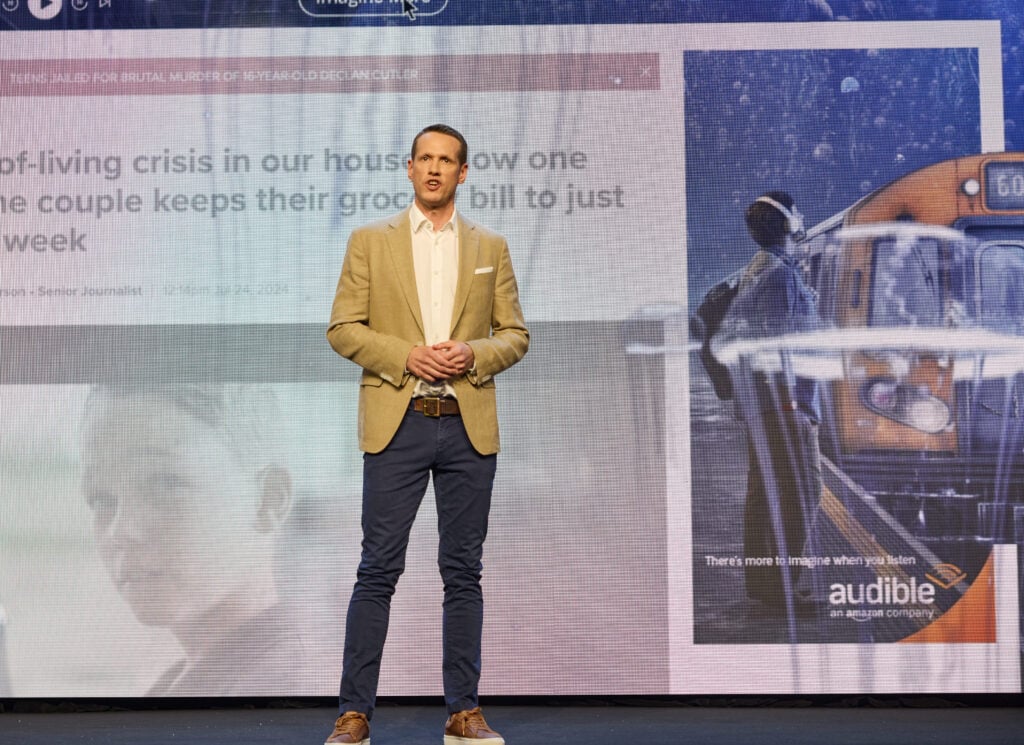
Nick Young
“We’ve signed a multi-year deal with Agile to incorporate web traffic, app downloads, and search data insights in every report, giving you the multiple data points and granular insights you need to understand the effectiveness of your CDP platform. Whether your budget is $20 grand or a sponsorship of $20 million, you know exactly how well your campaign is performing.”
Stepho was in full evangelist mode against a dramatic backdrop emblazoned with “The Challenge”, telling guests Nine today was going to change the game. He also promised he would guarantee “better business results”.
Those results were linked to investing more with Nine of course. He again reinforced that “Total TV has never been stronger” with an explanation that as the economy improves there will be winners and losers. The winners will be people who have invested in marketing their brand.
Better than YouTube, bigger than Netflix
Stepho repeated the TV audience growth stats and added: “850,000 people visit 9NOW every single day. We build reach six times quicker than YouTube, and we’ve reached 20 times more people than Netflix. At 9Now, our streaming and on-demand platform is a world-class experience. It’s a world-class experience for consumers, and it’s a world-class experience for advertisers.
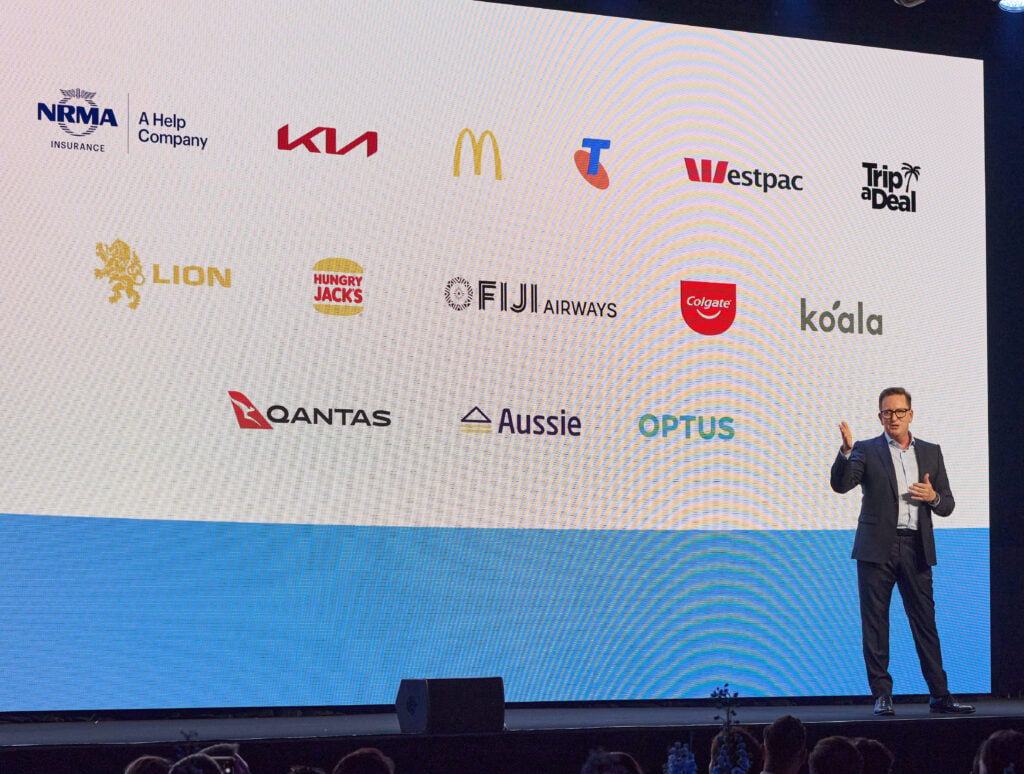
Michael Stephenson
“But irrespective of the facts, in the last two years, over $600 million of advertising has been moved from total television to the most powerful advertising platform there is, bottom-of-the-funnel, performance-based channels. And I appreciate how difficult it is for our partners that are in the room right now, because CEOs are asking for short-term results. They’re asking for short-term performance. You need to improve your ROI. We need to reduce costs. And most importantly, I think, increasingly, we need to prove a direct line between the advertising investment that you make and the sales that it generates.”
He then claimed that platforms that promote their own measurement have been given a disproportionate credit for their contribution in the marketing ecosystem.
“Today we’re going to announce relationships with the leaders in market mix modelling in Australia [as we] prove that investing into total television will deliver better business results. Fourteen brands have already signed up to be a part of this program to prove the efficacy of television.”
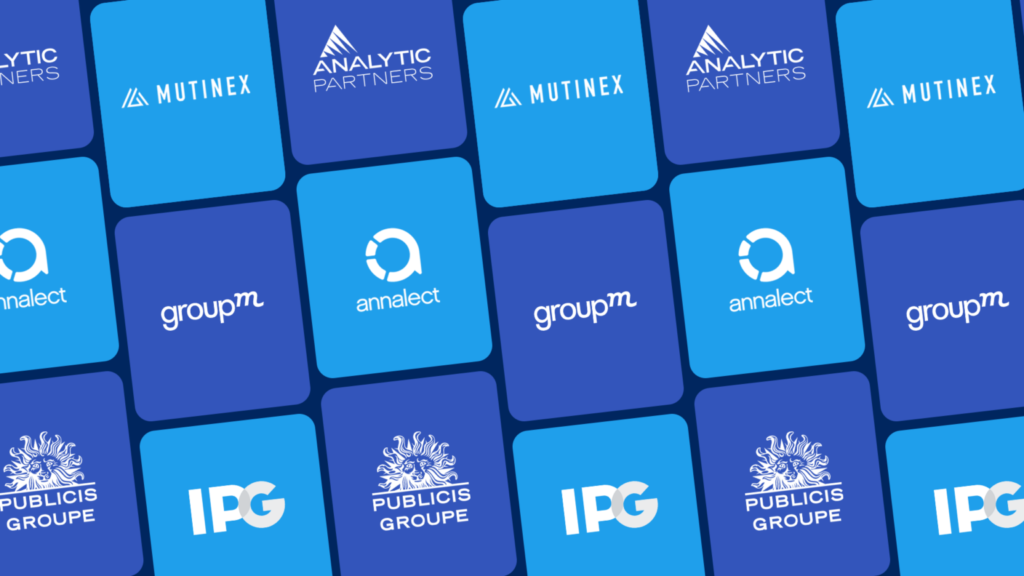
A slide on the screen indicated those brands include NRMA, KIA, McDonald’s, Telstra, Westpac, Trip-a-Deal, Lion, Hungry Jacks, Fiji Airways, Colgate, Koala, Qantas, Aussie Home Loans and Optus.
The Upfront wrapped just over two hours after it started with a reel highlighting the content. Just four new programs and returning favourites.
Two dramas – both from New Zealand. One of them screening before the end of this year.
See also:
Nine Upfront 2025: New series for Sam Armytage, Rodger Corser and Rachel Griffiths
